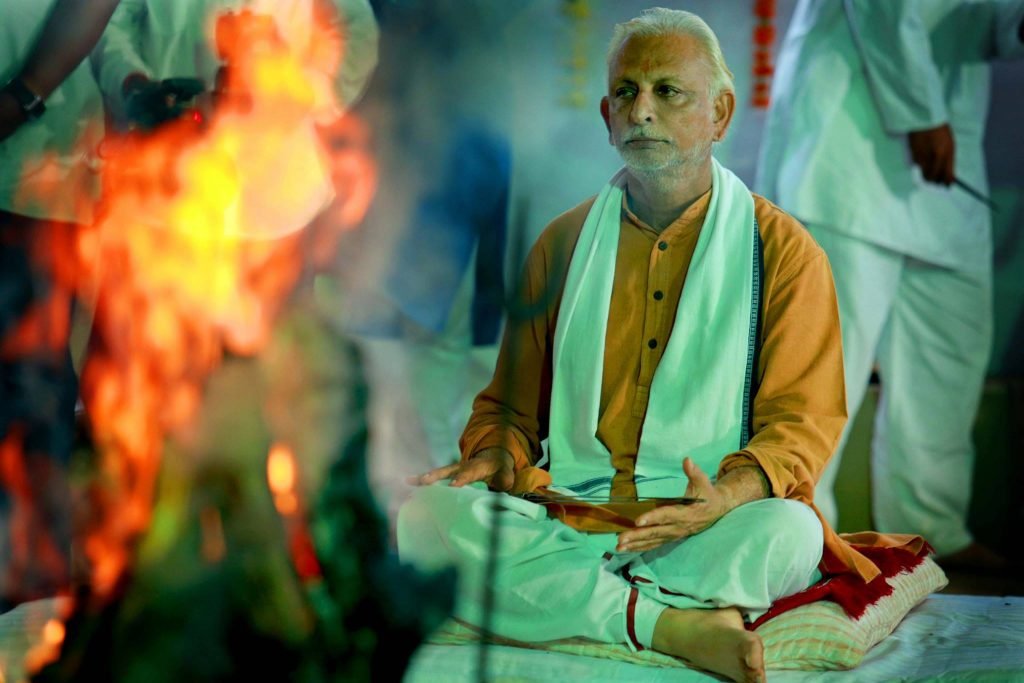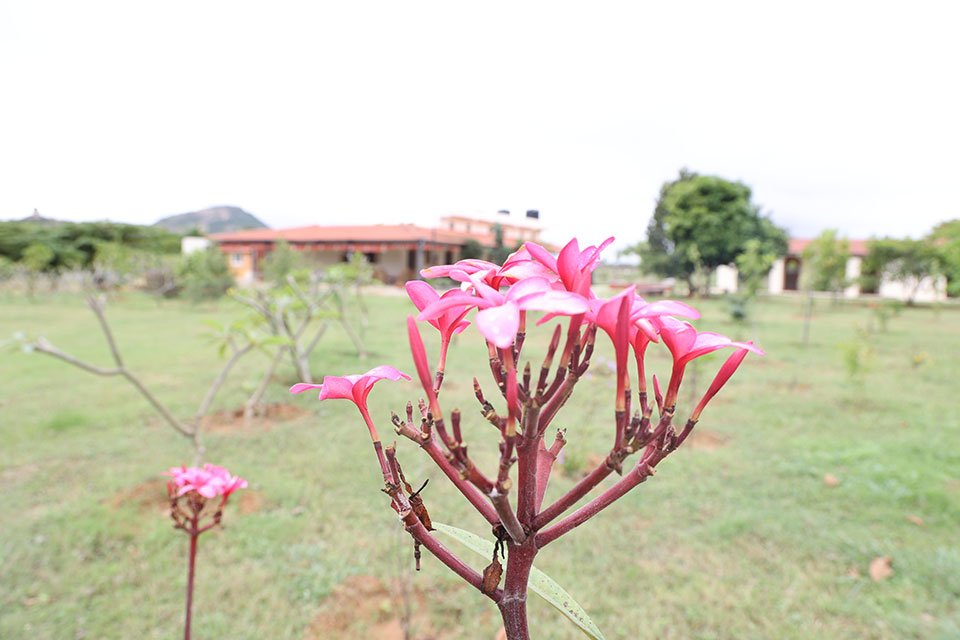Many of us have known each other for many years and I have been talking and holding satsangs. At the end of it, there has been only talking and listening and not much implementation.
The very fact that we are on a journey, to a new place which we haven’t seen and somebody, let’s say, who has seen the place before, has given you certain instructions – pack a few sweaters, have your bags ready, keep your shoes, so that you know what you have to carry with you. And you are also told how long it will take to walk and how difficult or easy it is, then only you can reach the new place. It is very important that it is not just told & heard and forgotten, but actually implemented.
How to Implement the teachings
When we say implement, there are 2 sides to it. One is the practice of sadhana and the other is the practice of certain principles that are conducive to the practice of sadhana.
The basic fact is that the mind has various levels of impurities, agitation and indiscrimination. As long as these last, they are like curtains, which very subtly veil or cover the Truth. So, when I say search, you are not searching for something outside yourself. You are searching for something inside. And to find what you are searching for, one needs to penetrate so many layers of impurities, and so many layers upon layers which are gathered, not only in this life, but for many hundreds of lives. It is not an easy thing to get free of them.
We are born with certain characteristics – certain predilections in this life & some of those are from our past lives. Now, as long as these are there, in different layers, it’s not possible to penetrate – to remove the veils and curtains, tear them down, and come face to face with the truth – which is after all in our hearts.
So first, what is required is to tear these coverings or wrappings. Which means – how does one live? What are the principles to be followed? Therefore, you will find that every religion, whatever be their ideologies, outward manifestations and practices – deep down, everybody agrees, that there has to be an ethical excellence.
Unless and until, certain ethical principles of conduct are applied and practiced as part of one’s daily life and sadhana, one cannot hope to attain the Supreme Truth.
The ultimate aim of spiritual fulfillment is to find the Truth – Satya. In fact, there are people whose only desire is to find the Truth. There may not be many, but there are. Such people are called ‘satya-kaamas’ – people whose only desire is to reach the Truth.
To reach the Truth, you have to start with being truthful, practically in day-to-day life. You cannot expect to find the Universal Truth and speak lies 24 hours a day, day-in & day-out. Then you are under an illusion. You may think that you have found the Truth, but it may not be the Truth. Because, if you cannot implement it in your day-to-day existence, how can you find the Universal Truth!
In daily life – live a life of good conduct.
The Buddhists, for instance, do not believe in a God, as such, as a creator God, they believe in the ‘pancha shila’ – that means the 5 ways to live. . The Jains also have it. Islam also has it. Christianity has also got it. Jesus spoke to the highest extreme – “Bless them that curse you…”, he said, which is not so easy. And as far as the ethical systems of the Upanishads are concerned – fearlessness and truth are the two most important steps.
Why ‘fearlessness’? Because, when you follow the path of sadhana (which is not followed by most people) everybody is swimming along with the stream and one person has the guts to stand up and swim against the current. When you do that, it is very likely that you will be branded a mad person, or a stupid fellow, because you are going in a different way. To do what you want to do, as you are, without fear of what the public is going to say, is ‘fearlessness’.
Fearlessness is not going and foolishly facing a bomb – that is ‘stupidity’. Fearlessness is, “I have decided to walk the path – I have decided to follow some principles – I have decided to follow a certain way of life. No matter what anybody says, I am going to do it !”
A person who is following the path of spirituality, does what he has to do fearlessly, not what others will say.
Your practice. Your sadhana.
Sadhana need not be the same for everybody. A spiritual teacher, teaches a person sadhana according to that person’s capacity & according to that person’s needs. Everybody cannot practice the same thing because nobody is made the same. Some people may have a devotional temperament and some may be intellectual, some may be practitioners of yoga. There are different kinds of people, and according to them, one has to teach. Therefore, when a teacher gives you instructions, follow those instructions completely, to the point. Don’t say that ‘this I’ll follow, this I won’t…’
Therefore to take a Guru – to take a spiritual teacher, as a guide, is a choice that we have to make very, very carefully. You cannot suddenly jump into it. Because, if you jump into it, you’ll feel bad coming out of it, and then you can’t do what is being told, and you’re in a big mess. So watch carefully before you take the decision – because once you take the decision, implement it 100%. If you don’t implement it 100%, the Guru does not lose anything – except that he feels sorry, but you lose what you want to find – nothing else.
Now, it is very, very important that if you have been given a sadhana – whatever has been given to you, practice it with complete attention, without missing a single day. Otherwise, it just will not work. Great saints who have attained the highest are supposed to have practiced meditation and spiritual practices throughout the night; sometimes for days together in a lonely place, and finally they have attained it. Therefore the practice of sadhana has to be given great importance & you have to practice regularly, what all has been taught to you by whoever. If you have accepted a teacher, practice that fully.
Now, when we sit down to implement the practice, certain characteristics, which are considered as impurities of the mind will come to the fore and prevent you from practicing. That’s why I said both are important.
The essence is, one, that you have to practice your sadhana, make time for it, practice as much as you like. Second, bring about a change in your day-to-day life and day-to-day existence – transparency in your character and conduct. Without which we may continue to meditate for years, but nowhere will we go. Because, the first reflection of spiritual perfection is in your day-to-day life. How you deal with it, how you behave, what you do, this is most important.
When we attain the goal of it, when you touch ‘That’ all the effort put into it is worth it. There is nothing more to be attained, there is nothing more valuable. What is more valuable than finding out that you are the ‘Truth’ and are truly free? Nothing can hold you, nothing can burn you. At the end of it, it is a great achievement.
Simple way of meditation in solitude
First bow down, keep your head down to Earth. Don’t be in a hurry to lift it up, then lift it up slowly and sit comfortably. You may breathe consciously, or unconsciously, but watch your breath. As you watch your breath, you will feel after a while that your attention will be diverted by little movements or little pain here and there. When it happens, put your mind entirely on that. Suppose you feel pain in the knee, don’t shift your knee to look there. Close your eyes and fix your attention there & then keep on shifting your attention to all the different parts of the body. When you are not doing that, watch the breath. When you are not watching the breath, bring your attention to any part of the body. Simply watch what thoughts come and go. While you are doing that, if you feel calm and quiet; in some parts of your body, or in the heart or between the brows, some kind of movement – don’t ignore it. Just sit quietly and watch it.
In solitude, where one sits for long hours, watching the breath, we are face-to-face with ourselves. You can also sit and look at a lake or a river. The closer we are to trees and nature, and further we are from human-made things, one’s mind can settle down more effortlessly.
One can come back to worldly life after the initial period of solitude and lead a life which is in appearance, to all intents and purposes, the same to other people. But deep down, one is a changed person and the absolute peace and happiness within is reflected in one’s dealings with the outside world.
The idea is, that when the mind has become quiet, on its own it is a conduit to the Supreme Soul.
-Sri M






